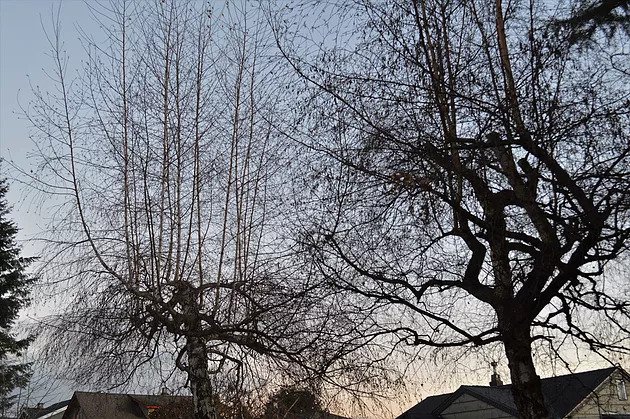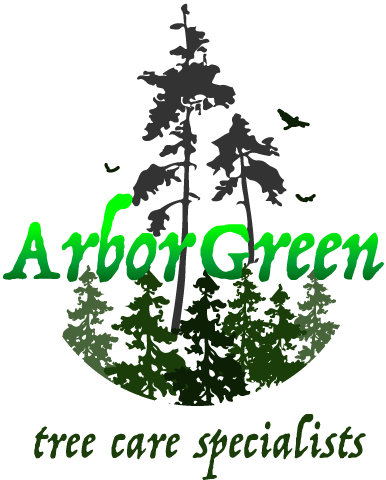
Tree Topping: Why You Shouldn’t Do It
What is Topping? Tree topping is an out-dated and harmful form of pruning performed by cutting the top of a tree’s main stem or leader, thereby reducing the height of the tree considerably. This is a very harmful practice for several reasons as described below. If you think your trees are in need of pruning, consult an ISA Certified Arborist or a reputable local tree service.
6 Reasons Why You Shouldn’t Have Your Trees Topped
1. New growth of weakly attached limbs or tops:
When you top a tree, it becomes stressed at the loss of so much of its food producing foliage. As a result, the tree will put all of its energy into growing new branches or tops. These limbs or tops can be very weak at their point of attachment and are significantly more likely to fail than the original single leader.

Often times, a homeowner will have a tree topped because they believe it will permanently reduce the height of their tree or because they think the top of the tree is at risk of breaking in high winds. Unfortunately, many tree services will oblige and do the work without providing accurate and honest information, essentially charging the customer to increase their trees risk for failure. If you ever have a tree service offer or suggest for you to top your tree, they are not meeting industry standards and you should call another tree service or an ISA Certified Arborist. They will likely offer you a lasting and healthier solution for your tree and likely at a more affordable cost. Skip to the end of the article to find out what some of the alternative options an arborist can provide to topping your tree.
2. Starvation:
A tree’s leaves are where the process of photosynthesis occurs which provides the tree with its food (in the form of starches). These starches are transported down the tree to the roots providing them with the nutrients they need. The roots use this energy for growing and water uptake. The water is then transported up the tree to the branches and leaves. When you top a tree, a drastic amount of the food producing foliage is removed which can prevent the tree from being able to supply the roots with the food it depends on and thereby preventing the roots from supplying the rest of the tree with the water it relies on. This effectively starves the tree. Good pruning practices rarely involve removing more than 1/4 of the total trees foliage. Pruning is usually best done by a certified arborist or accredited tree service.
3. Shock:
A tree’s crown acts like an umbrella, shading the bark from direct sunlight. Sudden removal of this protective foliage exposes the bark to direct sunlight and a symptom known as ‘sunscald’ may occur. Adjacent trees may also be adversely affected if they were previously shaded by the tree that has been topped. These trees may enter a state of decline and death may even occur.
4. Insect and disease:
Topping creates large wounds on the tree which may be very difficult for the tree to compartmentalize (A trees natural defense to wounds) resulting in easy access for insects and fungi. This can result in a state of decline or death of the tree.
5. Rapid new growth:
Often, a homeowner has their tree topped to reduce and manage the height of the tree. What they usually don’t know is that the opposite usually occurs. A tree’s response to such a drastic loss of foliage is to rapidly grow new branches, often times many new branches known as ‘water sprouts’ will begin growing, returning the tree to its original height and often much bushier than before.
6. Cost:
Manpower and the correct tools are not all that’s needed to properly prune your trees. Pruning requires knowledge and proper techniques to be done effectively and without harming the tree. Have a certified arborist or reputable tree service give you an estimate before letting just anyone prune your tree.
Improperly pruned trees can cost much more money down the road due to the following:
- Reduced property value
- Removal and replacement cost if the tree dies
- Loss of other trees and shrubs adversely effected by the lost foliage
- Risk of liability from weakened branch unions
- Increased pruning costs in the future.
Alternatives to Topping:
1. Crown reduction:
Crown reduction is a form of pruning that reduces the size of a tree by pruning large branches back to what are known as laterals, which can then assume dominance. Laterals should be at least 1/3 the diameter or the branch being removed. Generally speaking, ‘crown reduction’ is performed on deciduous trees. If you have a conifer tree that is already too large and has a single dominant stem, have an ISA Certified Arborist or a reputable tree service company come assess your tree. They can provide sound and professional advice. Need to hire an arborist?
2. Have a professional arborist or reputable tree service prune your trees proactively:
Do not wait until your tree is too large or a hazard. ‘Crown cleaning’ (the removal of dead, dying, or diseased branches) can help keep your tree in good health. This will also increase the aesthetics of your tree and cost less over time. Additionally, a good arborist will perform an inspection during this time, if they notice any problems with your tree they may be able to assess and deal with it before it becomes a much larger issue. What is an arborist?
3. When planting a tree in your landscape, keep the species’ mature height in mind:
Plant short-growing trees under utility wires or in areas where height could be an issue. Plan ahead and do your research before planting trees on your property. It is advisable to contact an ISA Certified Arborist before planting a tree. Even if you decide to plant it yourself, they may be able to help you choose a suitable species as well as inspect the planting site before-hand to ensure it is a suitable location. They will analyze the soil, grade, surrounding structures and area to ensure your tree will have adequate room for growth of the roots and canopy, as well as fertile soil with good drainage.
4. Hire a certified arborist or a reputable tree service company.
Tree care professionals and arborists are trained to perform specialized pruning techniques utilizing specialized industry pruning and safety equipment to do the job properly. Pruning can also be quite tricky and even dangerous. As a rule of thumb, if you have branches that need pruning and you need a ladder to reach them, this is a good indication you should hire a certified arborist or a reputable tree service company.


No Comments